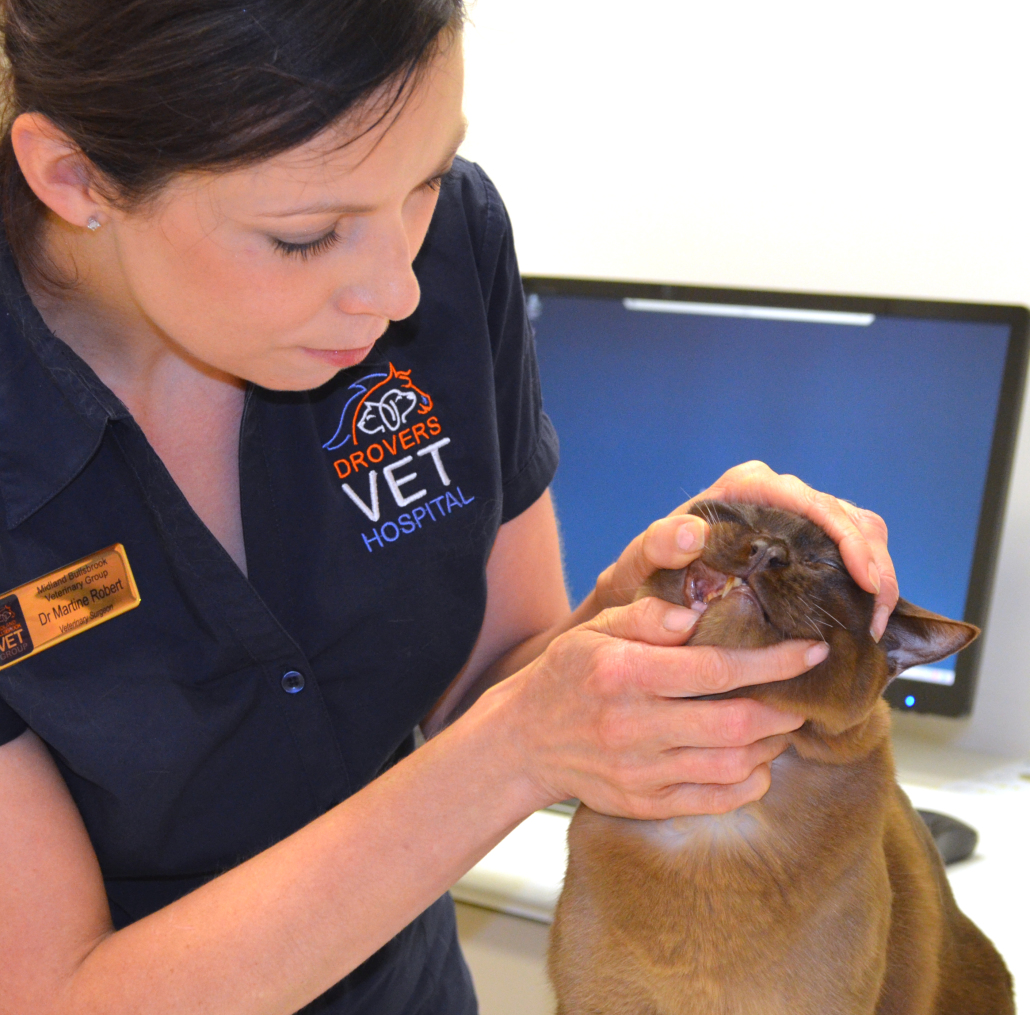Dental Care in Dogs and Cats
Imagine what your teeth would be like if you never brushed them. Initially there would be a build up of plaque and you would have bad breath. Then your teeth would turn yellow and your gums would recede, exposing the roots of your teeth, which would loosen and start to fall out. This of course would definitely be a very painful thing to go through.
This is exactly what happens to dogs and cats, often at a surprisingly young age. Ideally, begin looking after your pet’s teeth from an early age, but if you haven’t already don’t be disheartened. It is never too late to start.
A good dental care program has three main components:
- Brushing
This should be done on a regular basis using an enzyme-enhanced toothpaste designed specifically for pets. These toothpastes come in several flavours, the most popular being poultry for cats and malt for dogs. They help kill the bacteria which cause tooth and gum disease (periodontal disease) and are specially formulated not to be rinsed. Do not use human toothpastes, as the ingredients can be harmful to your pet and his/her teeth. Special animal toothbrushes and finger toothbrushes are available, both of which are very soft and well accepted by most pets.
Introduce your pet to brushing gradually. To begin with, get your pet used to having his/her mouth handled. At first do this and the brushing just before feeding your pet so that he/she is rewarded when it is finished. Later, when it is all second nature perform brushing after the meal just as you would with your own teeth.
After a few days of handling your pet’s mouth smear some of the toothpaste on the outside surfaces of the teeth by holding the mouth closed and lifting the lip a little. When this is well accepted begin brushing. Be gentle. A circular motion is the most effective for cleaning teeth.
When both you and your pet have become accustomed to this, start brushing the insides of the teeth too. To do this put a hand over the top of the muzzle, push the lips to one side between the back teeth and pull the head back gently. This should help keep the mouth open and allow good access to the teeth.
Once you get the routine working brushing your pets teeth should only take a few minutes.
2. Dietary management
Hard or coarsely textured foods are best for pets’ teeth. Wet foods do not aid in keeping the teeth clean much at all. Dry food and large lumps of meat and vegetables force your pet to chew thoroughly through its food. This massages the gums and helps prevent tartar formation. There are also special diets that aid in keeping teeth cleaner longer. These include Royal Canin Dental for dogs and cats. These foods are very palatable and well liked by almost all pets.
There is a lot of controversy over feeding bones to pets. Bones are fantastic for keeping the gums and jaws healthy, but it depends on the individual animal as to whether or not the benefits outweigh the potential dangers. For cats feed raw chicken wings or necks. Raw marrow bones are the best choice for dogs. It is always best to get your butcher to slice the marrow bone down the length and remove all of the marrow as this is one of the major causes of stomach upsets and serious diseases such as pancreatitis.
Never feed your pet cooked bones as these may splinter and cause damage to the intestines as it passes through or even cause constipation. Never allow dogs to have small bones such as chicken or chop bones or vertebrae as these can cause obstructions in the intestines, which often need to be removed via long and difficult surgeries.
- Regular dental check ups
A good time for these is at the annual vaccinations but pets that have had dental disease in the past should be checked every 6 months. Problems that need to be checked are retained temporary teeth, gum disease, mouth infections, loose and fractured teeth and tartar build up. Pets usually require a general anaesthetic for dental treatment. A full physical examination is performed prior to any anaesthetic and if necessary laboratory tests may be required in older patients to reduce the anaesthetic risk.




